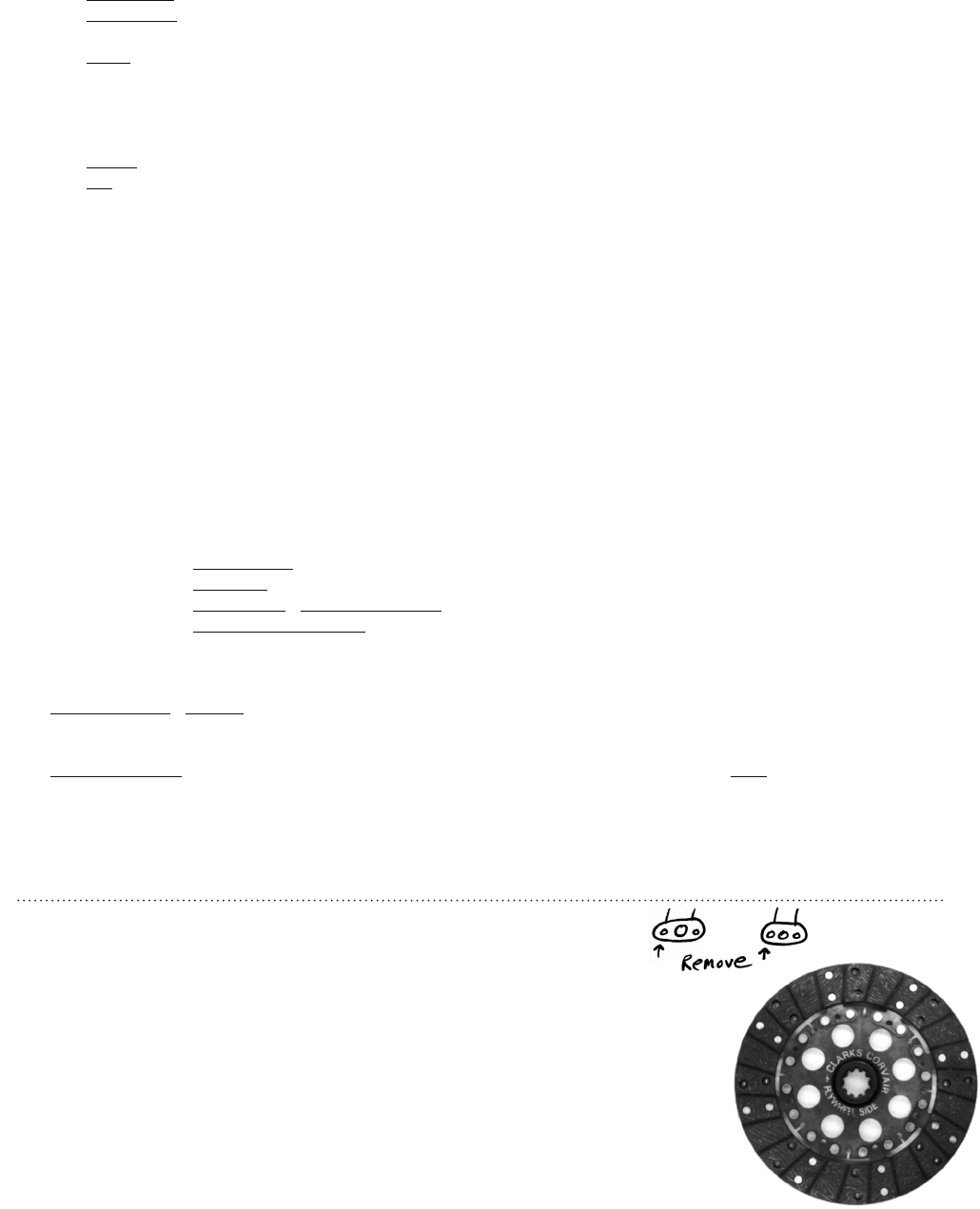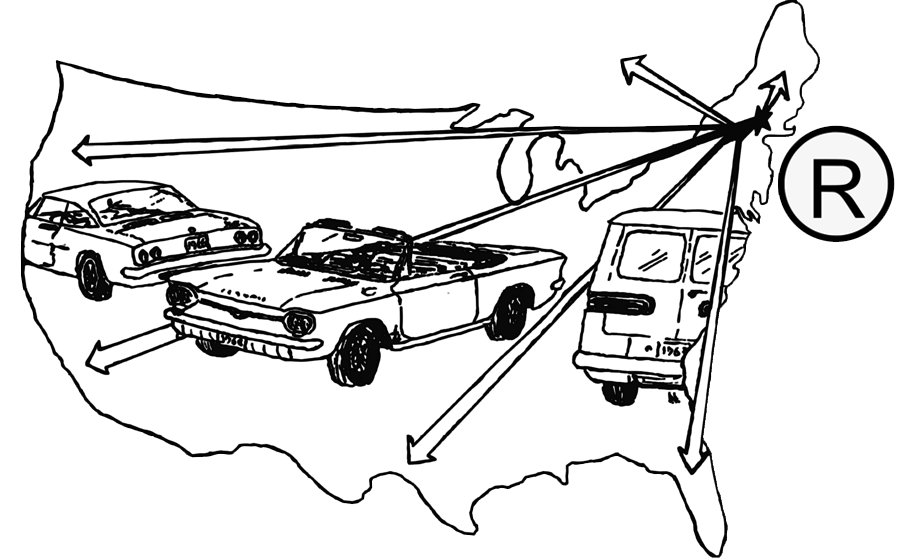
397
TURBO TECHNICAL SECTION
150 OR 180 TURBO?? What made the difference? The carburetors were a little different. The head chambers were a little different but
95% of the total difference is in the size of the inner ends of the blades on the exhaust turbines & impellers and the enlarging necessary inside their
respective housings. Outward appearance, size, and fit are basically identical.
WHAT'S NORMAL?
GAS MILEAGE – With stock carburetor – 15-22 MPG
ENGINE TEMP. – Example: 60 mph in 80° temperature approximately 400° (normal range you can expect 350°-475°).
The original gauges are not the greatest and a lot of things affect the temperature.
BOOST – A strange creature. It varies depending on engine RPM, load, and temperature. I have never seen boost from just revving a Turbo.
Even in first the boost will seldom come on until about 4500 RPM or higher; 2nd gear about the same. 3rd gear and 4th gear about
2800-3500 RPM but again it varies on how hot, if going up a hill, down a hill, or on level ground! The gauge should read about 1/2
to 3/4 of the way into the positive side. (The numbers don't really mean much. You probably aren't getting that much boost)! If yours
only goes to "O", you need a rebuild or at least a "clean out" of carbon.
OIL USE – Turbo's do generally use more oil than other Corvairs.
USE – Be sure at least once a week to make that Turbo come on. If you don't they carbon up.
REBUILDS
TIRED TURBO MOTOR? If your turbo motor has over 60,000 miles, it could probably use a rebuild. Turbo motors run hotter and use more oil
(past the turbo seals and rings.) You may find that you have good compression, have rebuilt the turbo and still don't seem to have much power. The
1964 we just rebuilt only had 60,000 miles and had been previously owned by meticulous owners. When we pulled the heads, the intake ports were
nearly choked off with oil, carbon and old fuel varnish. One only had an opening of about ¼ "! It still ran and the turbo would almost kick in, but what a
difference after the rebuild!!! We also had about 1/2 cup of aluminum flashing that we cleaned from between the fins.
A Turbo rebuild is not too bad if you have these tools – large snap ring pliers, dial indicator, possibly a torch, and of course a Shop Manual. We can
supply most of these parts and/or rebuild your Turbo for you. Here, however, are a few of the tips we have picked up that aren't in the Shop Manual:
1. Left handed lock nut – often we have to heat them to remove.
2. Exhaust impeller stuck in housing – glass bead inside outlet side. Rotate if possible. Saturate with oil overnight and tap or press dead
center of impeller with handle of hammer (often necessary to heat housing where clamp goes).
3. 1962-64 impellers were suppose to be a press fit. 1965-66 were not, they just slip on and off.
4. Check housing where turbine shaft "piston ring" seal rides.
ADD A TURBO?? So you want to add a Turbo to a non-Turbo engine? First, you should realize that for best, long range results, an engine should
be totally designed for the Turbo. That's what Chevy did. We have talked to people that have put Turbos on just about every combination. Here's a quick
summary: With Powerglide – The few I have talked to said it doesn't work out well.
80 & 95hp. – okay – a lot of modifying and final results about like a regular Turbo.
110 & 140hp. – Dropping compression – excellent results and durability.
Keeping stock compression – performance superior over stock Turbo, especially low end. Some loss of durability.
SUMMARY LIST – This list gives a detailed list of parts you will need to build a Turbo engine (including carburetor & exhaust systems).
C7799 2 oz.
WHAT'S DIFFERENT – 1962-63 – Bigger connecting rods, nitrided crankshafts, special camshaft, special exhaust valves, bronze exhaust valve
guides, special heads (Turbo oil drain – right head, special heat sensor hole, left head compression), special
exhaust, other minor changes.
RECOMMENDATION? – If you want good long term dependability and driveability, stay basically stock. If you MUST add a Turbo to a non-Turbo
engine TRY to round up all the parts before you actually decide to start. We can supp ly about 95% of the parts.
The remaining 5% can be rough!
Turbo Crossover Pipe Hints:
62-64 If you have a leak where the crossover fits into the inlet pipe, install the first clamp 1/8" from the end
of the crossover pipe end. Install a second clamp close to the first clamp and rotate 45–90 degrees.
65-66 Installation onto the inlet pipe is much easier if you can remove the manifold stud that is
closest to the passenger side from both manifolds.
NEW CLARK REPRO CLUTCH DISCS
YES! You can now order brand NEW, EXACT REPRO 9" CLUTCH DISCS for use in all Corvairs. EVEN BETTER
THAN our excellent REBUILT DISCS. All our Multi-Kits can now be ordered with this NEW disc and your old
one still has a core value!
ORDER A NEW DISC – See page 110 MULTI-KITS – See Blue page MK-9
Clutch Discs Slightly THINNER? Yes!!
GM originally called for a non-compressed thickness of .300"-.320". For years we sold original GM discs and
knew that every once in a while a person had problems with release until the clutch had up to 1,000 miles.
I even had the problem when I gave my father a complete new flywheel, pressure plate and GM disc for his FC.
15 years ago we spoke with our rebuilder and he said there was a rebuilder release about this years ago which is
why he always supplies us with rebuilt ones that are .280"-.300" and our NEW ONES are in the same range. Now you
will almost never have an initial release problem and since the clutch is good until it gets down to the rivets, there is no real loss of useful life.







